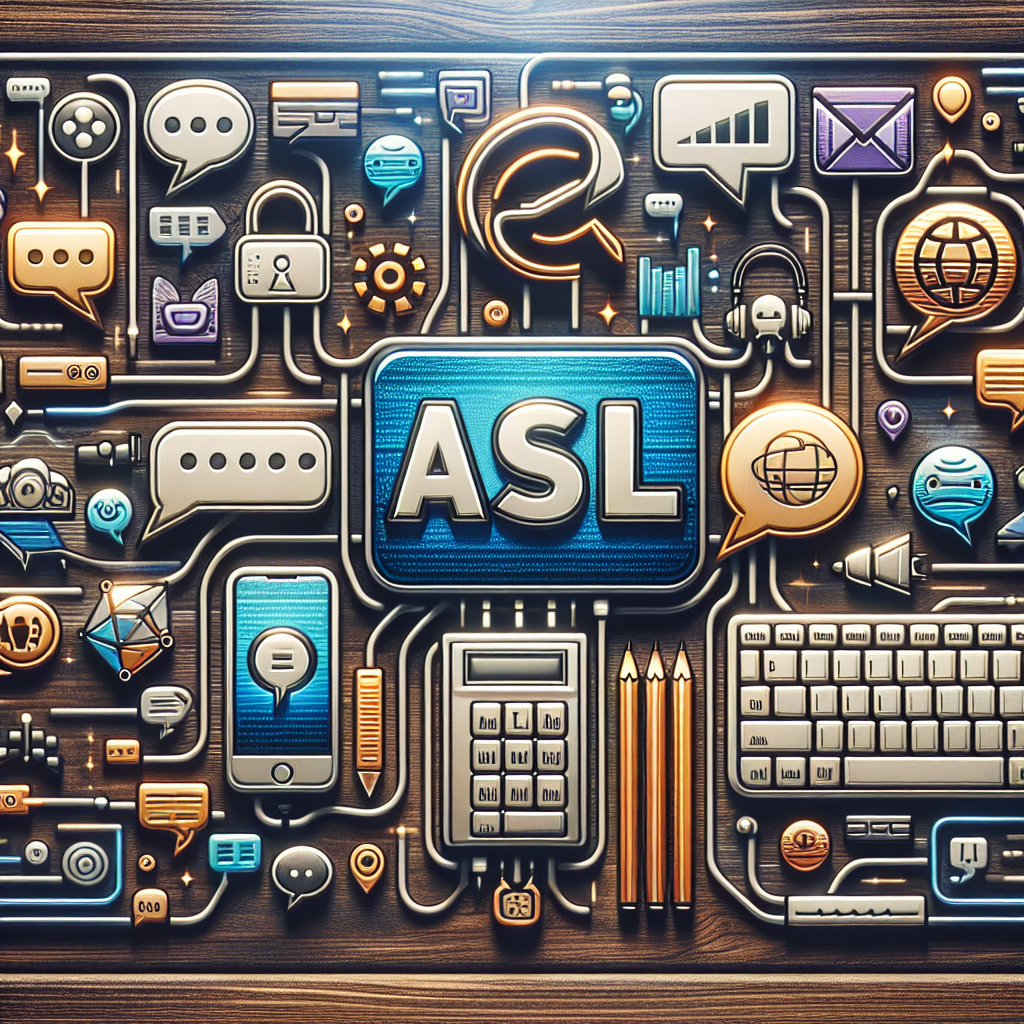In the ever-evolving landscape of digital communication, acronyms have become a staple in conveying complex ideas and sentiments swiftly. Among these, "ASL" stands out as a multifaceted term with varying meanings depending on the context. This article aims to demystify the acronym "ASL," exploring its different usages and tracing its evolution from early internet chatrooms to modern texting.
Understanding the Acronym: What Does ASL Mean?
ASL is an acronym that can stand for different phrases depending on the context. In its most traditional sense, ASL stands for "American Sign Language," a complete, natural language that serves as the predominant sign language of Deaf communities in the United States and most of Anglophone Canada. This interpretation is widely recognized in academic and social contexts related to sign language and Deaf culture.
In the realm of internet slang, however, ASL takes on a completely different meaning. Here, ASL stands for "Age, Sex, Location?" It is often used as a quick way to ask someone for basic personal information, typically in the context of online chatrooms and messaging platforms. This usage has become somewhat less common with the advent of more sophisticated social media profiles but is still understood by many who frequented early internet forums.
Another emerging usage of ASL in slang is to express exasperation or disbelief, similar to saying "as hell." For example, someone might text "I’m tired asl" to mean "I’m tired as hell." This usage demonstrates the fluidity of language and how acronyms can take on new meanings based on popular trends and cultural shifts.
ASL in Different Contexts: From Sign Language to Slang
American Sign Language (ASL) is a rich, expressive language that employs hand gestures, facial expressions, and body language to convey meaning. It is used by the Deaf and hard-of-hearing community in the United States and parts of Canada, playing a crucial role in communication and cultural identity. ASL is distinct from English and other sign languages, with its own grammar and syntax.
In the context of internet slang, "ASL" serves a different purpose. When someone types "ASL?" in an online chat, they are typically asking for the other person’s age, sex, and location. This shorthand became popular in the early days of the internet when chatrooms were a primary means of social interaction. It allowed users to quickly gather basic information about each other, fostering a sense of connection and context in an otherwise anonymous digital environment.
The slang usage of ASL to mean "as hell" is a more recent development, reflecting the dynamic nature of language. This iteration of ASL is often used for emphasis in casual conversation, particularly in text messaging and social media. For instance, saying "I’m hungry asl" intensifies the sentiment, making it clear that the speaker is extremely hungry. This colloquial usage underscores how acronyms can evolve and adapt to new linguistic trends.
The Evolution of ASL: From Chatrooms to Modern Texting
The acronym ASL has a storied history in the digital world, particularly in the early days of the internet. During the 1990s and early 2000s, chatrooms on platforms like AOL Instant Messenger (AIM) and Internet Relay Chat (IRC) were bustling hubs of activity. In these spaces, "ASL?" became a quick and efficient way for users to introduce themselves and gather basic information about others. This practice helped to break the ice in a virtual environment where anonymity was the norm.
As technology advanced and social media platforms like Facebook, Twitter, and Instagram gained popularity, the need for "ASL?" as an introductory question waned. These platforms provided more detailed user profiles, reducing the necessity for such shorthand. However, the acronym did not disappear; instead, it evolved. The slang usage of ASL to mean "as hell" emerged, reflecting the changing landscape of digital communication. This new interpretation allowed the acronym to remain relevant in contemporary conversations.
Today, ASL continues to be used in various forms, illustrating the adaptability of language in response to cultural and technological shifts. While its usage as "Age, Sex, Location?" has diminished, it persists in certain online communities and nostalgic references. Meanwhile, the "as hell" interpretation has found a place in modern texting and social media, demonstrating how acronyms can be repurposed to fit new contexts and needs. The evolution of ASL exemplifies the dynamic nature of language and its ability to change over time while retaining elements of its original meaning.
The acronym "ASL" serves as a fascinating case study in linguistic evolution, showcasing how a single term can hold multiple meanings across different contexts. From its roots in American Sign Language to its varied uses in online slang, ASL reflects the fluidity and adaptability of language in the digital age. Understanding these different interpretations not only enriches our grasp of contemporary communication but also highlights the ways in which language continues to evolve in response to cultural and technological changes.

